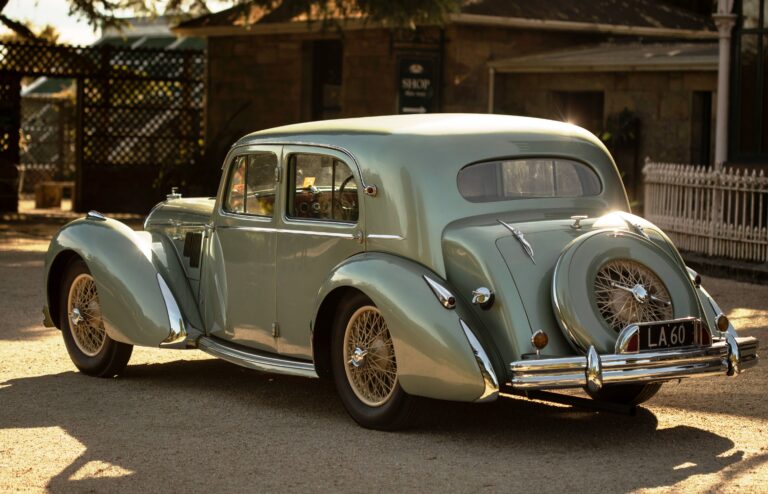data-animation-override>
“Trevor catches up with a man who many reckon is New Zealand’s oldest circuit racer
”
Readers may recall the story that appeared in New Zealand Classic Car, September 2010, about John Cottier, then aged 76. We titled that article, ‘John Cottier: New Zealand’s Oldest Racer?’
Since that article, the Cottiers have moved further south to my home town of Amberley, a one-hour drive south to Christchurch, their new property having plenty of space for a workshop and garage.
A late start
It wasn’t until around three years after John retired from farming that he became interested in motor racing, with his first venture into motor sport coming in 2007 at the age of 72, with a BMW 323, a car he used until his first Starlet came on stream. Originally, he had two Starlets built — a green four-door for sprints and hill climbs, and a white two-door for circuit racing. The two-door Starlet was badly damaged in an incident at Ruapuna, and John gave up gravel racing to concentrate entirely on sealed circuit racing. The green four-door was subsequently converted into a circuit car and later painted white after an incident at the hairpin during the two-day Lady Wigram Revival meeting in 2010.
About two years ago, John spotted a yellow two-door 1979 Starlet for sale at the side of the road for $800. Once purchased, the car was completely stripped down and rebuilt with fibreglass doors, tailgate, and bonnet, so, as well as being a two-door, as opposed to John’s previous four-door Starlet, this car is considerably lighter. With the exception of the windscreen, all glass was replaced with Perspex, and the car was painted white, incorporating Toyota’s racing colours.

Full works motor
Andrew Neill of Andrew Neill Automotive, Oamaru, has assisted with all three of John’s Toyotas. The new motor in John’s Starlet is a 5K block bored to 1598cc. A lot of thought and work was concentrated on the head and camshaft-grind profiles, with Sheldon Rush — also of Oamaru — putting in plenty of research, experience, and work into the front and rear suspension set-ups. John is very pleased with the car’s handling and stopping capabilities and wishes to thank both Andrew and Sheldon for their input.
During the weekend of November 1–3, 2013, at Mike Pero Motorsport Park, Ruapuna, for the annual Wigram Revival meeting, John’s Shellsport class races were held in conjunction with the Historic Touring Cars. Jim Richards flew over from Australia to compete in his old JPS BMW 635CSi. Another driver of note was Angus Fogg, driving the ex–Hourigan/Prince Jaguar XJ-S. At the back of the touring car field was the BMW M3 of Conrad Timms from Glenfield, who was just fast enough to hold off the three Toyota Starlets entered in Shellsport — of John Cottier, Glenn Dunlop, and Michael Bramber. Glenn and Michael are both young enough to be John’s grandsons. This resulted in four great races over the weekend, as on each occasion the three Starlets were constantly waiting to pounce if the BMW made the slightest mistake.
During the Shellsport race on Sunday, a huge battle developed again between the three Starlets and the BMW of Timms. While Bramber and Cottier appeared to cross the finishing line in a dead heat,
the electronic timing equipment showed that Bramber’s Starlet was just 0.073 of a second ahead. That was probably the best and most hard-fought race John has had since he started racing at 72, and he’s now aged 80. You will note the number on John’s Starlet is 34, chosen because he was born in 1934! John’s new claims to fame are that he raced against Jim Richards while aged 79, plus he pressured Angus Fogg into making a mistake and spinning off.

Highlands Motorsport Park
John entered the one-hour endurance race at the opening meeting of the new Highlands Motorsport Park at Cromwell during the weekend of November 8–10, 2013. He was very impressed with the presentation of the entire complex, and the race was very challenging indeed.
John and his faithful Starlet were number 44 on the starting grid out of a field of 50. While John has had time at Ruapuna, Timaru International Motor Raceway (the former Levels Raceway), and Teretonga Park to take a drink from his drink bottle while racing, there was no time to do this at Highlands, as you are just that busy there. However, John really enjoyed the experience, although he’s a little reserved about whether he would tackle it again.
Well-informed announcers
On the weekend of February 8–9, 2014, the annual Southern Festival of Speed moved down to Levels (the third and final round was at Teretonga, Invercargill, the following weekend). Once again, a fierce battle developed between the top four cars in the Shellsport class. John was lying fourth each time, right behind the battling top three. However, he did manage to grab third place for a short period.

I feel bound to pay tribute to the well-informed and knowledgeable Shellsport specialist on the public-address system at Timaru. Lawrence Sidnall was loud and clear and held the public’s attention very well. He even gave out information on each individual driver and their car and sponsors, both before and during the races.
Future racing plans
John enjoys one-hour endurance races over the more usual six- and eight-lap sprint races — he’d completed 10 such races prior to the Highlands race with his Starlets, and not once has he had to retire. As you’d expect, John is a very fit and alert man. He attends Amberley Gym twice a week, each time doing the one-hour circuit.
As John celebrated his 80th birthday on January 25 this year, his family is becoming a little concerned that racing an endurance event, especially at Highlands, might be too ambitious. John says, “My competitive edge is starting to wane a bit. In future racing, be it one hour or just the six- and eight-lap races, I may not be so aggressive in future. And I don’t like being knocked around while racing, as I have been on a few occasions. However, at this stage I have no intention of retiring from the local scene.”

Two veterans
John has won the Canterbury Car Club’s up to 1300cc class many times. This is based on a points system over the full season.
However, now the Starlet’s new motor is over that cubic capacity, he moves up a class this season. He has also been awarded Club Champion on two occasions.
John’s efforts in achieving so much in such a short time, and given he’s still racing at the age of 80, has meant he recently came to the attention of one of New Zealand’s greats.
Ken Smith, 73, who has been racing single-seaters for over 50 years and was recently awarded an OBE for his outstanding services to New Zealand motor sport, congratulated John on his “gallant effort” and said he hoped to be still racing by the time he reaches John’s age.
New Zealand Classic Car would like to thank John for his cooperation in putting this article together, and wishes him all the very best with his future involvement in motor sport, whatever that length of time may be. We will watch with interest and report any new developments.
Photos: Trevor Stanley-Joblin, Euan Cameron (Ruapuna and Highlands Motorsport Park), Chris Todd (Levels)


